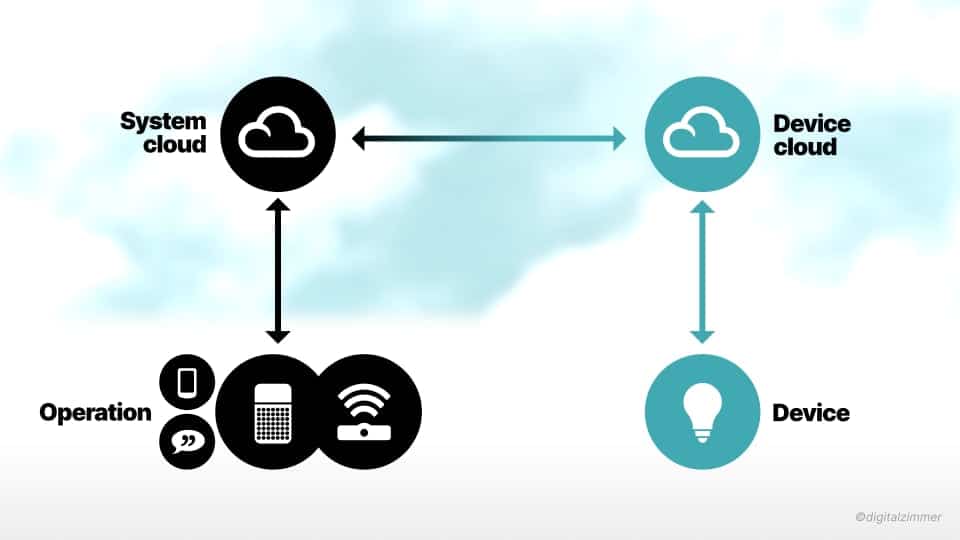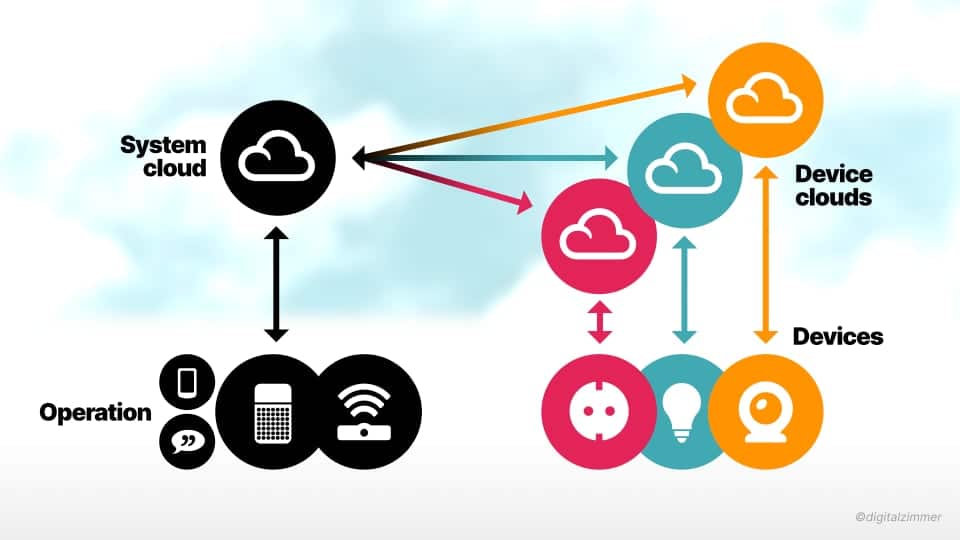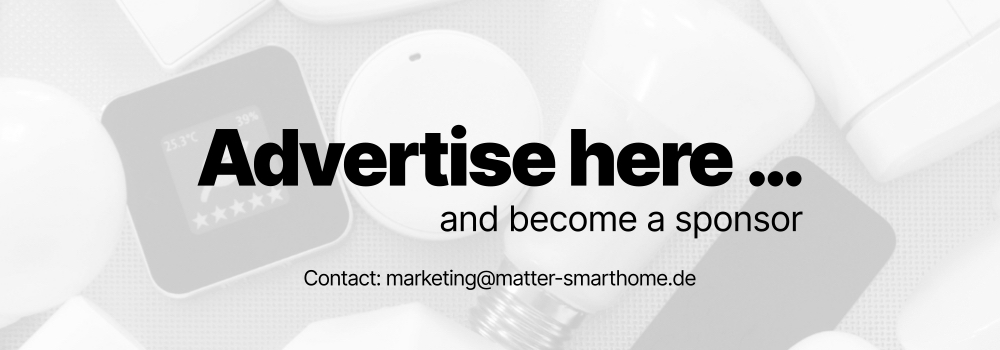#1: Local connection
The cross-manufacturer standard Matter not only regulates communication between devices in the smart home. It also defines certain functions. For example, how they receive their control commands. In this context, it is important to know that nowadays many remotely controlled WLAN lamps, power sockets and other so-called IoT (Internet of Things) products are constantly connected to the Internet.
This means the smartphone app or touchscreen does not control them directly, but sends commands to a web server. Technically, it can also be several servers or an entire server farm that the provider maintains. Because the goal is so cloudy and difficult to grasp, the term cloud has become common for server solutions on the Internet.
The data cloud processes information and sends the desired control signal back to the lamp or heating controller via the Internet. Voice assistants like Amazon Alexa also work this way. The only difference is that the server receives audio clips of the voice recordings instead of manual touchscreen commands from a smartphone.
Cloud to cloud connection

Strictly speaking, a smart home control system such as Alexa or Google Assistant already involves two data clouds: the cloud of Amazon or Google and the data center of the device provider. Both are in contact via the Internet. If the lights are to be switched on at home, the command first goes to the control system’s cloud, then to the device cloud, and finally from there back home.
Users can hardly check what happens on the way. Is the transmission encrypted and tap-proof? Who has access to the data if the server is located in a country with different laws and regulations, such as China?

These questions multiply as more products with their own cloud are added. In the worst case, the smart home then communicates alternately with servers all over the world, leaving data traces everywhere. This often involves keeping several connections open at the same time. The fact that cloud-based systems work as well as they do today sometimes borders on a miracle.
Besides data protection concerns, however, there is another reason to view the cloud-to-cloud connection critically: its dependence on the Internet. If a provider’s server or home Internet access fails, control no longer works. The commands get stuck or end up somewhere in data nirvana.
The local connection

Matter solves the problem by providing for local control from the outset. In this case, local means that a Matter-compatible device must be accessible to apps and smart home control centers in the home network – without a detour via the Internet. The smartphone, smart display or other control device communicates with them at home directly within the router’s network. Apple HomeKit has always worked this way, and the other providers of Matter-compatible control systems will adopt this approach. Amazon, Google and SmartThings, for example, have already started to introduce local operation on their control centers.
This does not yet apply to voice assistants. Although their providers are trying to make Alexa, Siri and others less dependent on the Internet, these efforts are still in their infancy. Until it is possible, Matter devices at home at least remain accessible via app and display when the household goes offline. They also leave fewer data traces on the Internet because, in case of doubt, a single cloud (that of the system provider) is sufficient for control. Cloud services from the device manufacturers will still exist, however. The Matter standard envisages them as an additional option providers can use to implement their own ideas and functions.
Share this information:

